Site: https://www.bowerswilkins.com
Country: United Kingdom
Year of Foundation: 1966
Slang Name: B&W
Pronunciation: Bowers & Whee'lkins
Bowers & Wilkins, or B&W, is a British company that designs and manufactures acoustics and headphones. Bowers & Wilkins is currently part of the B&W Group Ltd., which also includes the Rotel and Classe brands.
At the beginning of the story
Bowers & Wilkins is the brainchild of two British colleagues, John Bowers and Roy Wilkins: while serving in the Signal Corps, they became friends on the basis of their love of radio electronics and decided that after the end of World War II, they would organize a store for radio amateurs in Worthing.
 |
| John Bowers and Roy Wilkins |
With the development of the store began to supply equipment for voice information to the public in schools and churches in Sussex, which is why Bowers became actively involved in the design and assembly of audio systems. His designs turned out to be of high quality, and Bowers ended up establishing a small assembly line in the backyard of the store.
It was a large floor-standing speaker, whose cabinet and filter was designed by Bowers & Wilkins, and the speakers were taken from EMI and Celestion. The profits from the sale of acoustics allowed Bowers to purchase equipment for measuring and calibrating speaker parameters: an oscillator from the Danish company Radiometer and a pen recorder.
The first device is a frequency generator, and the second was used to record the signal on paper, and such a record could later be analyzed. With this equipment, along with the acoustics, Bowers & Wilkins could now provide calibration certificates.
Home appliances and global market entry
The next development by B&W is more affordable home acoustics - models DM1 and DM3, in the name of which "DM" stands for "Domestic Monitor". This line has gone through many transformations, and at the moment its ideas - accessibility with a proprietary sound quality - are embodied in the 600 series. It was released in 1968, and in the same year the company's acoustics entered the world market: it was sold in the Netherlands by the distributor of Audioscript.
A year later, Dennis Ward, who worked as a technical manager at EMI, joined the company's board of directors: the speakers of this company were used by B&W in their first systems. John Bowers' son Paul also started working at B&W.
In Japan, in 1970, B&W technology was introduced by Sony. It was she who brought the P2 acoustics to this country - it has the same body as the P1, but the Ionovac plasma tweeter was responsible for the high frequencies.
The first completely homemade acoustics by Bowers & Wilkins
In the same year, B&W decided it was time to move on to a full cycle of acoustics production: previously the company used speakers from other brands, although it produced its own filters and housings.
The first model in which all components are manufactured by the brand itself was the wide DM70 - in this model, the section with the electrostatic mid and high-frequency section is located in a separate box on the bass module. The acoustics received the British Industrial Design Award for their memorable rounded double-housing design, and thanks to positive reviews, the DM70 presses were successfully sold abroad.
Production had to be expanded: in 1972, another factory building was opened on Meadow Road in the same Worthing, where anechoic rooms and measuring equipment from the Bruel & Kjaer brand were located. Here, engineers investigated the linearity of the phase response and the physical parameters of the speakers, including their shape, using laser interferometry.
At the same time, the company released another model in the DM series - DM2 with not the most classic three-way design: instead of the LF-MF-HF circuit in this acoustics, the 8-inch speaker worked both low and mid frequencies, and two separate speakers worked as a tweeter and super-tweeter, respectively. The woofer was loaded onto the transmission line. High frequencies were voiced by a third-party speaker - Celestion HF1300. A year later, in 1973, B&W designed monitors for the BBC studios.
Sir Kenneth Grange
The greatest contribution to the development of the visual style of Bowers & Wilkins was made by Kenneth Grange - one of the founders of Pentagram and a famous British designer. He joined B&W in 1974 and was responsible for the design of acoustic enclosures. The first model created in collaboration with him was the DM6, released in 1976.
These acoustics was special in many ways: it was one of the first phase-coherent audio systems, which affected the design; all the speakers used in it were produced by B&W, and it was in this acoustics that the company used for the first time in the world a speaker with a Kevlar membrane - it was a six-inch midrange. A plastic, coil-free woofer was responsible for low frequencies, and a small tweeter with a diameter of 3/4 "played out high frequencies.
The stepped front panel design allowed the speakers to be positioned at different distances, allowing the engineers to achieve better frequency timing. The design, of course, left no one indifferent - because of the bizarre shape of the front panel and two thin legs, the speaker has even nicknamed "pregnant penguins" or "pregnant robots".
The brand's next model, the DM7, was born in 1977, and it featured another iconic B&W acoustics element - a tweeter housed in a separate housing. In this model, the tweeter was in a metal casing, similar to the headlight of a retro car, and a mesh dome protected it from physical damage. The mid and low frequencies were played out by a 6-inch speaker with a membrane made of proprietary polyamide fiber, and it was assisted by a passive radiator of the same diameter located below.
The modern Hi-Fi B&W
In 1979 came the very first generation of top-end acoustics B & W 801: it is tri-band, each band is in its housing modules with mid-and high-frequency speakers are covered with the dust cap. It took the company three years to develop this model.
The 10 '' plastic diaphragm woofer is engineered to play as smoothly as possible across the entire range - while still handling any amplification. The mid frequencies were taken over by a 4-inch driver with a polyamide fiber cone, and the high frequencies were played back by a 26-mm tweeter. These carefully matched acoustics provided such realism and accuracy that they were used not only in-home systems but also in demanding recording studios.
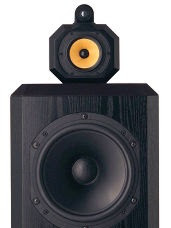 |
The success of the 801s provided Bowers & Wilkins with massive funding that John Bowers poured into the Steyning Research Establishment in Steyning in 1981. The laboratory employs acoustics and electronics specialists to model, design, and test acoustics samples.
In 1987, the company released an improved version of the 801 Matrix acoustics, which used a matrix damping system to increase cabinet rigidity, reduce vibration and improve speaker performance. A year later, these acoustics was installed in Abbey Road Studios.
Silver jubilee B&W
The company celebrated its quarter-century anniversary in 1991 with the release of Silver Signature acoustics: it used silver conductors instead of copper ones, silver commutation terminals, silver speaker coils, silver inductors in the crossover, and silver capacitors. The silver theme was also traced in the design of the model: there is a lot of chrome, including on the non-functional protective grille for the bass speaker and on the ring framing the bass reflex port.
This is large two-way acoustics with speakers that the company has never used before: a 7-inch woofer loaded onto a bass reflex is installed here, and an aluminum tweeter borrowed from the 801 Matrix, but devoid of a phase-equalizing ring in front of the dome.
The tweeter is housed in a shiny separate case and is slightly offset from the vertical axis of the acoustics - so, according to the developers, the effect of diffraction from the edges of the woofer housing is less felt. At the same time, the upper part of the woofer housing is slightly beveled to reduce distortion.
Eternal flagship - Nautilus B&W
It took Bowers & Wilkins engineers five years to develop the Nautilus acoustics - it was released in 1993. The developers were inspired by nature, in particular - by shellfish: the body is twisted like a shell, all the walls in it are rounded. Due to this shape of the body, the engineers managed to almost completely get rid of the distortions that the cabinet itself introduces into the signal.
After several decades, this acoustics remains the flagship in the company's lineup. In 1998, some of the technology used in the original Nautilus was incorporated into the slightly more affordable 800 Nautilus series. The design of Nautilus, the company claims, still inspires it to this day.
The digital world and diamonds B&W
The 800th series was developed: in 2001, in honor of its 35th anniversary, the company released the Signature 800 acoustics, based on the Nautilus 800, but with a modified, stronger body and a special color. In 2005, the 800N series was replaced by the 800D, where the "D" index stands for "Diamond": this speaker uses synthetic diamond tweeters instead of aluminum tweeters. For its 40th anniversary, the company unveiled a fusion of old and new in the form of Signature Diamond acoustics, designed by Kenneth Grange.
The first decade of the new century saw the popularization of home theaters and portable digital sources. This is exactly what B&W engineers have done since the move to a new office on Dale Road in 2002 and the establishment of the Bradford plant (later relocated to Cleckheaton, West Yorkshire).
In 2004, the company launched the PV1 series of compact home theater components. For the rounded design of the technology, the company that created, in fact, a spherical subwoofer, has received several awards.
In 2007, the company entered into a partnership with the Jaguar automobile brand - new Bowers & Wilkins speakers are installed in some configurations of these cars. In 2014, the acoustics of the company also began to be installed in Volvo cars.
Headphones, new generations of famous series
In 2010, the company released its first headphones, the P5. The model was aimed at lovers of portable sound - first of all, those who used Apple technology. Included with the headphones were wired with microphones and buttons, with which you could easily control playback and answer calls.
The abundance of metal, leather trim, signature design, and signature sound makes the P5 a premium product. In the same B&W presented desktop acoustics for laptops and computers - a small stereo pair MM-1, and also updated the 800D series acoustics to 800D2.
A year later, the company focused on portable audio: it introduced the C2 in-ear headphones and the P3 on-ear headphones, which are slightly smaller than the P5. Advances in wireless technology prompted B&W to update Zeppelin and release a version of Zeppelin Air with Apple AirPlay support, and then develop the Z2 acoustics that extends the sound capabilities of Zeppelin.
In 2014, an updated version of the P5 headphones and the first wireless acoustics, the T7, appeared in the company's catalog. A year later, the wireless model of the P5 Wireless headphones saw the light.
As a result, in 2019, the company introduced a series of Formation multi-room components that use proprietary communication technology between devices in a single network, ensuring minimal signal delay and high-quality information transfer.
The company's store in Worthing still exists today, and when you visit you can see the remains of the very first assembly line from which the history of the brand began.
In February 2020, the company changed its CEO: it no longer depends on EVA Automation, but the companies will continue to cooperate - this is precisely why the change of leadership is connected.





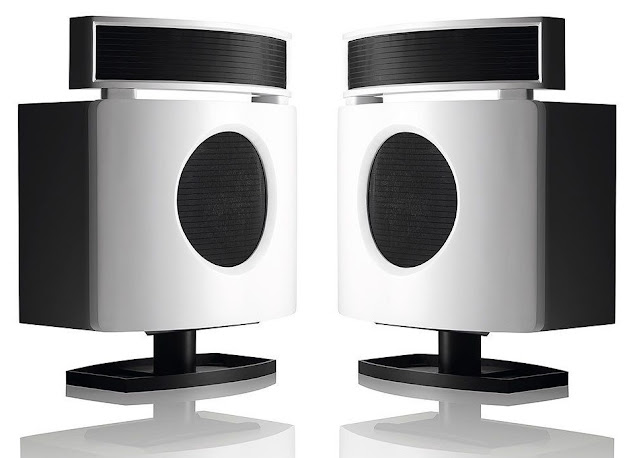





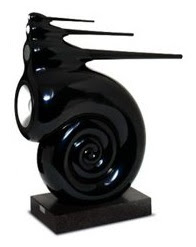
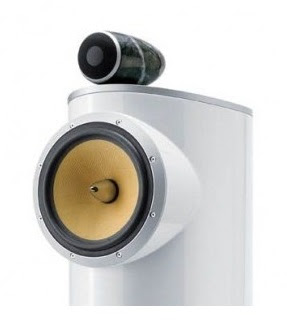
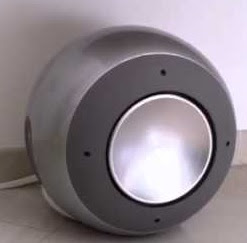














.jpg)



0 Comments